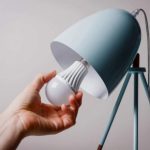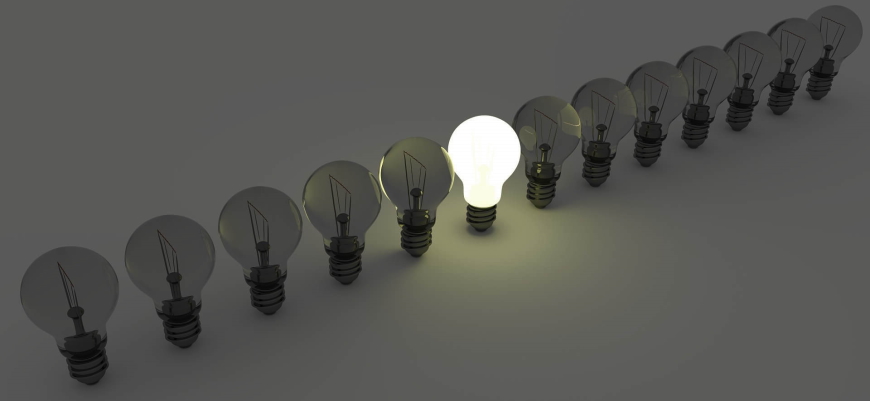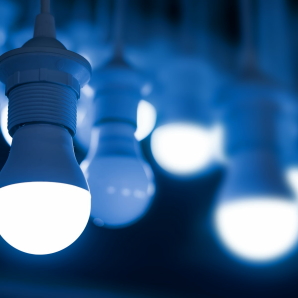
How Long Does an LED Bulb Last?
LEDs have been around for many years, but not until recently has their lifespan (50,000 hours) become comparable to a traditional incandescent bulb. LEDs are more expensive than traditional bulbs, but they use less energy and last much longer. LED light bulbs are now available in most stores. How long does an LED lightbulb last? The average life of an LED is about 50,000 hours (or 5-10+ years). This can vary depending on how often the bulb is turned on or off and which type of frequency it’s being used with; for example, fluorescent lights will shorten the life span because they require a lot of power to produce visible light.
 LEDs also produce less heat and use less power, which means the energy savings add up over time. The average LED lasts about ten years before needing replacement, and in many cases, will continue working for much longer. If you’re considering switching your home lighting from incandescent to LEDs, it’s worth considering how long you’ll save on your electric bill as well as how much brighter your house will be with these new bulbs.
LEDs also produce less heat and use less power, which means the energy savings add up over time. The average LED lasts about ten years before needing replacement, and in many cases, will continue working for much longer. If you’re considering switching your home lighting from incandescent to LEDs, it’s worth considering how long you’ll save on your electric bill as well as how much brighter your house will be with these new bulbs.
 Have you ever noticed how your LED lights are dimming and going out more often? If this is the case, it might be time to learn some ways to extend the lifespan of LED light bulbs. Often, when an LED bulb starts to go wrong, it will start flickering before finally dying. This can happen because they use a tiny amount of electricity, so they have less power available to operate correctly. One thing you can do is make sure that your fixture has been installed correctly, which means that there are no shadows or glare on the LEDs from nearby objects like furniture or other fixtures. There’s also something called “temperature cycling,” where heat causes them to die sooner than expected and turn off unnecessary lamps.
LED light bulbs are durable and long-lasting, but they can still be affected by excessive heat. One way is to keep them in an area where the temperature stays below 80 degrees Fahrenheit. If you live in a warmer climate or have trouble regulating the temperature, using a lampshade that blocks sunlight is also effective.
Have you ever noticed how your LED lights are dimming and going out more often? If this is the case, it might be time to learn some ways to extend the lifespan of LED light bulbs. Often, when an LED bulb starts to go wrong, it will start flickering before finally dying. This can happen because they use a tiny amount of electricity, so they have less power available to operate correctly. One thing you can do is make sure that your fixture has been installed correctly, which means that there are no shadows or glare on the LEDs from nearby objects like furniture or other fixtures. There’s also something called “temperature cycling,” where heat causes them to die sooner than expected and turn off unnecessary lamps.
LED light bulbs are durable and long-lasting, but they can still be affected by excessive heat. One way is to keep them in an area where the temperature stays below 80 degrees Fahrenheit. If you live in a warmer climate or have trouble regulating the temperature, using a lampshade that blocks sunlight is also effective.
How often do LED bulbs need to be replaced?
LED bulbs are more expensive than traditional incandescent bulbs, but they last a lot longer. So how long do LEDs typically last? You may be surprised to find that a 100w LED bulb can have a lifespan of up to 25 times longer than an incandescent bulb! LEDs also produce less heat and use less power, which means the energy savings add up over time. The average LED lasts about ten years before needing replacement, and in many cases, will continue working for much longer. If you’re considering switching your home lighting from incandescent to LEDs, it’s worth considering how long you’ll save on your electric bill as well as how much brighter your house will be with these new bulbs.
LEDs also produce less heat and use less power, which means the energy savings add up over time. The average LED lasts about ten years before needing replacement, and in many cases, will continue working for much longer. If you’re considering switching your home lighting from incandescent to LEDs, it’s worth considering how long you’ll save on your electric bill as well as how much brighter your house will be with these new bulbs.
Ways to extend LED light lifespan
 Have you ever noticed how your LED lights are dimming and going out more often? If this is the case, it might be time to learn some ways to extend the lifespan of LED light bulbs. Often, when an LED bulb starts to go wrong, it will start flickering before finally dying. This can happen because they use a tiny amount of electricity, so they have less power available to operate correctly. One thing you can do is make sure that your fixture has been installed correctly, which means that there are no shadows or glare on the LEDs from nearby objects like furniture or other fixtures. There’s also something called “temperature cycling,” where heat causes them to die sooner than expected and turn off unnecessary lamps.
LED light bulbs are durable and long-lasting, but they can still be affected by excessive heat. One way is to keep them in an area where the temperature stays below 80 degrees Fahrenheit. If you live in a warmer climate or have trouble regulating the temperature, using a lampshade that blocks sunlight is also effective.
Have you ever noticed how your LED lights are dimming and going out more often? If this is the case, it might be time to learn some ways to extend the lifespan of LED light bulbs. Often, when an LED bulb starts to go wrong, it will start flickering before finally dying. This can happen because they use a tiny amount of electricity, so they have less power available to operate correctly. One thing you can do is make sure that your fixture has been installed correctly, which means that there are no shadows or glare on the LEDs from nearby objects like furniture or other fixtures. There’s also something called “temperature cycling,” where heat causes them to die sooner than expected and turn off unnecessary lamps.
LED light bulbs are durable and long-lasting, but they can still be affected by excessive heat. One way is to keep them in an area where the temperature stays below 80 degrees Fahrenheit. If you live in a warmer climate or have trouble regulating the temperature, using a lampshade that blocks sunlight is also effective.